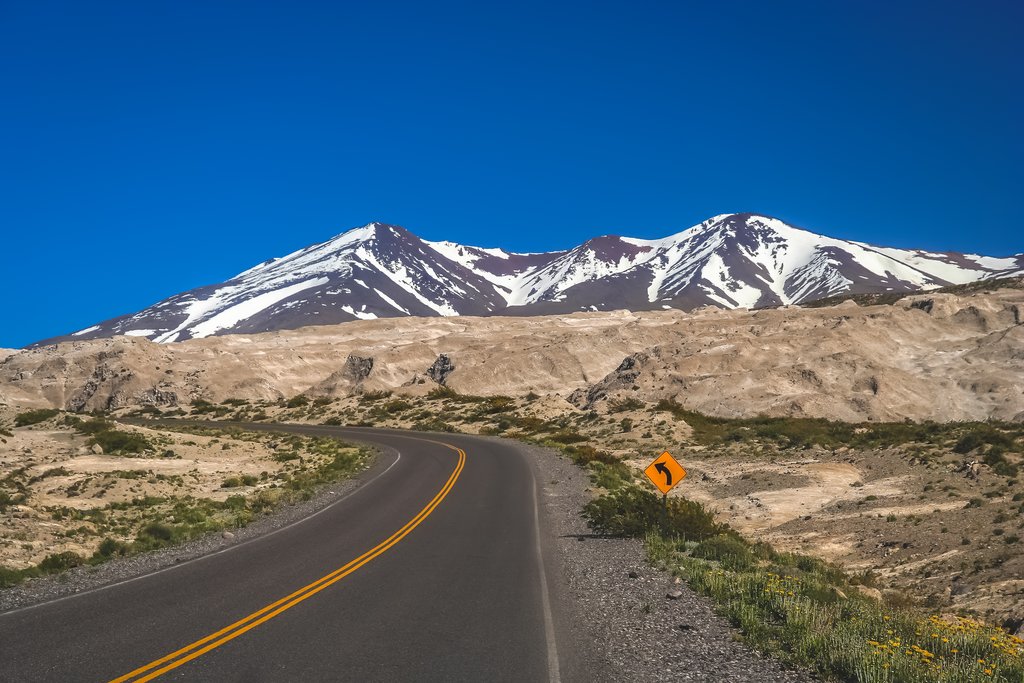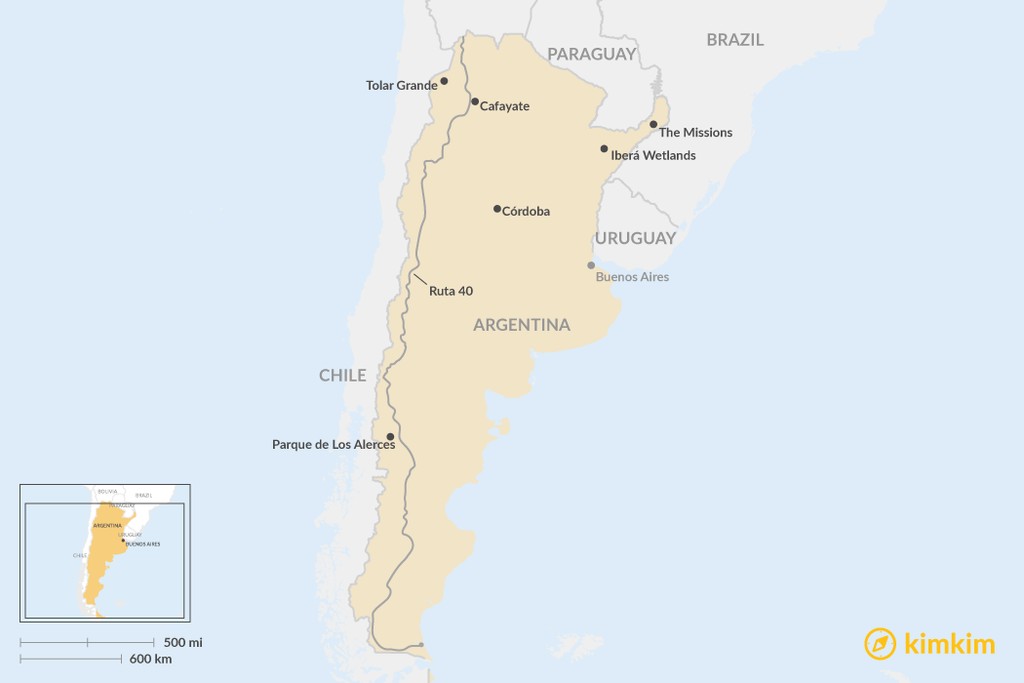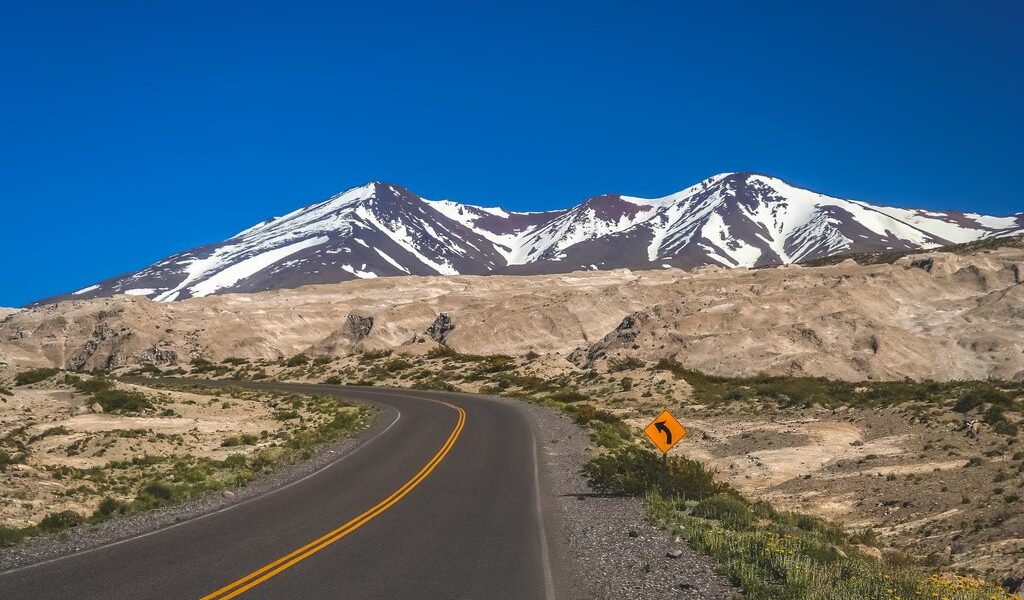
From sophisticated second cities to (nearly) secret wine regions, Argentina is full of great unknowns that are every bit as spectacular as the blockbuster attractions. Beat the crowds with historic Jesuit ruins in Misiones province, visit remote salt deserts studded with brilliant pools, and drive Ruta 40—a wilder version of North America’s Route 66, where you won’t have to share the road.
## Córdoba: Argentina’s Bustling Second City, Explored in Detail
If a city were to emerge as a true cultural rival to the captivating allure of Buenos Aires, it would undoubtedly be the vibrant university city of **Córdoba**. This dynamic metropolis, surprisingly often overlooked by international travelers in their Argentinian explorations, holds a wealth of experiences that warrant extended exploration. While many visitors, after experiencing the grandeur of Buenos Aires, often gravitate towards the iconic tourist destinations such as the awe-inspiring Iguazú Falls, the renowned wine region of Mendoza, or the dramatic landscapes of the far south, Córdoba proudly presents a plethora of compelling attractions, easily capable of captivating visitors for several enriching days.
The presence of a substantial student population has undeniably fostered an innovative and energetic restaurant scene, complemented by a thriving and diverse nightlife. Beyond its contemporary appeal, the strong student influence has also firmly established Córdoba as a pivotal hub for revolutionary ideas and unfettered free-thinking for many decades. A testament to its cultural significance, Córdoba was rightfully honored with the prestigious title of Cultural Capital of the Americas in 2006. Further solidifying its cultural standing, the city boasts an impressive quartet of grand museums, each thoughtfully dedicated to showcasing the diverse spectrum of artistic expression – emerging, contemporary, fine, and classical art. Delving into Córdoba’s rich historical tapestry reveals a UNESCO-listed quarter, thoughtfully centered around meticulously preserved 17th- and 18th-century Jesuit buildings, adding a significant layer of historical depth to the city. Furthermore, the city boasts a collection of strikingly photogenic churches, presenting ample opportunities for exploration and discovery of its historical essence.
Venturing beyond the city limits unveils the captivating countryside, celebrated for its sprawling *estancias*, expansive country ranches offering immersive experiences. These estancias beckon visitors with opportunities for horseback riding through picturesque landscapes, savoring delectable regional cuisine, and indulging in some of Argentina’s most evocative and atmospheric lodging options. For those seeking an invigorating outdoor adventure, a rewarding hike awaits at **Cerro Pan de Azucar**, situated approximately 24 miles northwest of Córdoba. A climb to its summit offers breathtaking panoramic views of Argentina’s bustling second city from impressive heights.
## The Missions: Poignant Jesuit Ruins – Echoes of a Bygone Era
While the magnificent Incan remnants that grace the Andes Mountains often take precedence on travel itineraries across South America, historical ruins located elsewhere frequently find themselves overshadowed and undeservedly overlooked. When travelers journey to Argentina, their focus often centers around the country’s stunning natural landscapes. However, the remarkable legacy of the Jesuits, who established around 30 missions within the Rio de la Plata basin during the 16th, 17th, and 18th centuries, deserves significant recognition. These historically important residencies, also referred to as “reductions,” are scattered throughout the region, offering a compelling glimpse into the past. Many of these historical sites are protected as UNESCO World Heritage sites, rivaling the well-known reduction ruins found in neighboring Paraguay.
For visitors exploring the lush and densely-forested Misiones province, primarily to witness the awe-inspiring majesty of the mighty Iguazú Falls, a unique opportunity arises to escape the crowds and discover lesser-known gems. Side trips to **San Ignacio Miní**, **Nuestra Señora de Santa Ana**, **Santa María la Mayor**, and **Nuestra Señora de Loreto** offer serene retreats where you can lose yourself amidst the historical intrigue and profound tranquility. San Ignacio Miní stands out as the most accessible reduction to visit, conveniently situated in the charming town of **San Ignacio**, approximately 40 miles northeast of **Posadas**. Furthermore, Córdoba itself serves as a perfect starting point for delving into the rich Jesuit heritage. The city proudly protects six reductions under the UNESCO designation of the **Jesuit Block and Estancias of Córdoba**, providing a comprehensive historical immersion.
## Cafayate: A (Nearly) Secret Wine Country – Unveiling a Hidden Gem
Most wine enthusiasts readily recognize Mendoza as Argentina’s premier wine region, its name prominently featured on countless bottles of Malbec exported around the world. However, the picturesque town of **Cafayate**, located nearly 650 miles north of Mendoza in the Salta province, has steadily carved out its own distinct identity as a noteworthy wine destination. Cafayate holds the distinction of being the birthplace of the Torrontes grape, which forms the cornerstone of the region’s white wine production. Visitors to Cafayate are welcomed by an array of *bodegas* (vineyards) and cellars, offering engaging tasting experiences. Among these, **Bodega Nanni** stands out as a particularly noteworthy establishment.
Once you have savored the diverse flavors and aromas of Cafayate’s wines, an exploration of the captivating Quebrada de Cafayate beckons. This remarkable geological formation showcases a mesmerizing tapestry of sandstone formations and intricately twisting rocky valleys, all nestled in close proximity to the vineyards. This striking landscape offers a unique and unforgettable visual complement to the region’s renowned wines.
## Tolar Grande: Salt Deserts and the Ojos de Mar – A Surreal Landscape
Tucked away within the remote northwestern reaches of **Jujuy** province, **Tolar Grande** remains relatively untouched by mainstream tourism, largely due to its isolated location and the unfortunate discontinuation of passenger services on the nearby railway line. Despite these challenges, this unassuming settlement, historically caught between the jurisdictions of Bolivia, Chile, and Argentina, harbors some of the most strikingly surreal and otherworldly scenery to be found anywhere in the country.
Tolar Grande finds itself nestled within the stark and expansive plateau of the **Puna de Atacama**, a region renowned for its bizarre and captivating rock formations. However, the landscape’s most visually compelling feature lies in its extensive *salares*, vast salt deserts that dramatically transform significant portions of the plateau into an unbroken expanse of dazzling white. This stark white canvas is strikingly contrasted by the presence of vibrant blue saltwater *pozas* (pools) scattered across the landscape. The most iconic of these pools, collectively known as the **Ojos de Mar**, are a collection of small but remarkably deep bodies of water, boasting extremely high salinity levels. The colors of these remarkable pools undergo dramatic shifts and transformations in response to changes in light conditions. Despite the harsh environment, these pools harbor a unique form of life: stromatolites, considered to be among the oldest-known living organisms on our planet.
## Iberá Wetlands – A Biodiversity Hotspot
The vast and watery expanse of the **Iberá Wetlands**, situated within the northeastern Corrientes province, stands as South America’s second-largest wetlands ecosystem, following only the world-renowned Pantanal in significance. While it receives a relatively modest number of visitors compared to other prominent natural attractions, the Iberá Wetlands is rightfully recognized as one of the continent’s most crucial wildlife-watching destinations. The wetlands boast an impressive array of fauna, encompassing capybaras, caimans, maned wolves, howler monkeys, and swamp deer, alongside a staggering diversity of bird and reptile species.
The **Aguapé Lodge**, nestled on the shores of Laguna Iberá at the southern edge of the wetlands, serves as an excellent base for exploration. From this convenient location, visitors can readily embark on wildlife-watching expeditions and immerse themselves in the natural wonders of the Iberá Wetlands.
## Ruta 40: Argentina’s Answer to Route 66 – An Epic Road Trip
As recognized by Argentines, and increasingly by intrepid travelers worldwide, **Ruta 40** stands as one of the world’s most unforgettable road trips, rightfully earning its place alongside Route 66 in the United States and Australia’s Great Ocean Road. Despite its legendary status, relatively few international visitors venture to explore even a small section of this sprawling 3,100-mile highway, which stretches from **La Quaica** in Jujuy province down to **Rio Gallegos** in Patagonia. The route winds its way through some of the most remote and sparsely populated terrain in Argentina, characterized by limited public transport options and sections that remain unpaved. While navigating Ruta 40 may present certain challenges, the rewards are truly exceptional.
The highway, running parallel to and often within close proximity of the majestic Andes Mountains, gracefully traverses 20 of the country’s national parks, offering ever-changing landscapes that encompass towering mountains, arid deserts, and rugged, rock-strewn plains. Furthermore, Ruta 40 presents an alternative and rewarding perspective from which to experience some of Argentina’s most cherished attractions, including the picturesque vineyards of Mendoza and the breathtaking Los Glaciares National Park, home to the world’s largest advancing glacier.
## Parque de Los Alerces: Rare Trees and Lonely Lakes – A Sanctuary of Solitude
**Parque Nacional Los Alerces**, one of Argentina’s lesser-known national parks, gracefully embraces the border with Chile, encompassing a dramatic panorama of verdant forests, pristine lakes, and towering peaks. Located far from major urban centers and conventional tourist hubs, the park serves as a sanctuary, protecting the rare Alerce forest, home to ancient trees that have thrived for up to four millennia.
The forests spread out around a collection of lakes that constitute the drainage basin for the untamed **Futalefú River**, offering exceptional opportunities for both fishing and hiking. Unlike Argentina’s more popular national parks, Parque Nacional Los Alerces offers a unique sense of solitude, allowing visitors to wander for days without encountering another soul. Begin your adventure at **Villa Futalaufquen**, the park headquarters located on the shores of **Lago Futalaufquen**, where you will find trailheads and comfortable accommodations.

B-69

